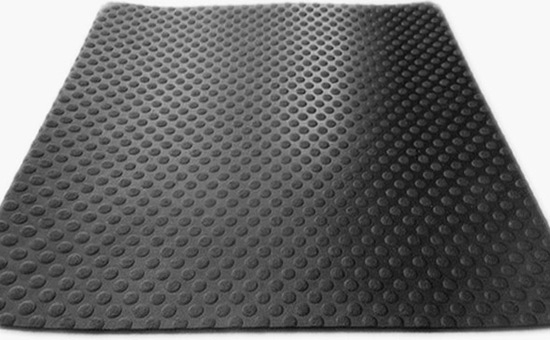
Different use conditions have different requirements for the strength, impact resistance, abrasion resistance, and temperature resistance of the rubber lining. Choosing the appropriate variety of rubber production lining is an important condition to ensure the performance of the finished product. Natural rubber has the characteristics of good physical and mechanical properties and easy processing. It can be used to prepare soft rubber, hard rubber and semi-hard rubber to adapt to different use occasions. In actual production, there are certain differences in the types and amounts of compounding agents in different types of natural rubber lining formulations.
1. Soft rubber formula
100 parts of natural rubber, 4 parts of sulfur, 1 part of accelerator D, 3 parts of zinc oxide, 15 parts of hard carbon black, 40 parts of talc, 50 parts of barite powder, 1 part of stearic acid, 2.5 parts of paraffin wax, Guma 2 parts of polycarbonate, 4 parts of asphalt, 5 parts of zinc oxide, 2.5 parts of antioxidant D; total: 230 parts. Under normal circumstances, soft rubber can withstand most inorganic acids, alkalis, salts, organic alcohols and some organic acids, and other oxygen-containing derivatives; adjust the matching system appropriately, natural rubber soft lining can also be resistant to phosphoric acid and chlorine.
2. Hard rubber formula
100 parts of natural rubber, 59 parts of sulfur, 1.8 parts of accelerator D, 23.6 parts of zinc oxide, 2.7 parts of spray carbon black, 35 parts of talc, 5.4 parts of pine tar, 18.9 parts of clay; total: 246.4 parts. Hard rubber is usually more resistant to corrosion than soft rubber, but neither soft rubber nor hard rubber is suitable for hydrocarbons, mineral oils and strong oxidants. In the actual application process, hard rubber is a thermoplastic material, and usually can only be used in an environment below 65°C.
3. Semi-hard rubber formula
100 parts of natural rubber, 20 parts of sulfur, 1 part of accelerator D, 2 parts of zinc oxide, 5 parts of hard carbon black, 10 parts of talc, 60 parts of hard rubber powder, 2 parts of pine tar; total: 200 parts.
In actual production, natural rubber can also be used together with styrene butadiene rubber in a certain proportion to prepare soft rubber and hard rubber, or use latex reclaimed rubber 2YLYY75 or tire reclaimed rubber in an appropriate amount in rubber lining formulations based on natural rubber to improve Natural rubber's fluidity, plasticity and resistance to vulcanization and antigenicity will further reduce the cost of raw materials. Later editors will share with you the specific application of reclaimed rubber in various rubber linings.
Exclusive original article [commercial authorization] reprint, excerpt and excerpt in any form are prohibited without written authorization. Focus on Hongyun rubber: learn the process formula and raw material technology of producing rubber products from recycled rubber to help you reduce costs and increase profits